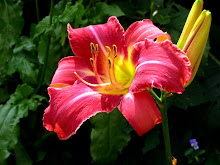I don’t know about you, but weeds are the bane of my gardenfarming existence. Not bugs, not slugs, not diseases, but weeds. And don’t give me any of that one-man’s-weed-is-another-man’s-whatever … I’m talking about anything that grows repeatedly where you don’t want it, that interferes with what you’re trying to grow by taking nutrients, sunlight, moisture away for its own purposes.
It’s particularly challenging here because nine years ago, when we moved to this farm, we started by tilling a field that hadn’t been cultivated in many years. We’re talking grass, the kind with horizontal rhizomes that, when you till or pull or break them in any way, simply turn into multiples of the mother plant. There’s bindweed, almost impossible to eradicate. There’s any number of other species that happily spew their seeds all over the field and hillside.
Most weeds can be kept under control pretty easily by timely hoeing or cultivating. Not so with quackgrass. The roots grow deep and spread horizontally for a pretty impressive distance. If you dig carefully and follow the rhizome, it can go, and go, and go, until you’re just plain amazed at its ability to thrive no matter how hard you’re trying to get rid of it.
So up in the field, I’ve been turning to a combination of cover crops and mulching. Last year I sowed a peas/vetch/rye mix in a difficult patch, and it did a great job of suppressing and crowding out the grass. Were I to cover crop it this year as well, there’d be even more improvement … but we’re going to add compost and plant corn.
I’ve been mulching my garden beds in the yard for years with the typical wood chips found in any garden center, and that’s a huge help; but doing that up in the veggie field, or the daylily beds, would be waaaaay too costly (not to mention that many of those mulches are treated with dyes and fungicides, and I don’t want that in my vegetable beds!). Mulch hay, it turns out, is full of weed seeds; found that out the hard way. Straw doesn’t have the weeds, but grass grows right through it unless you keep piling it on thickly throughout the season. And I found out in a painful way that some softwood chips actually inhibit growth, due to the chemicals released in their decomposition.
Last year, I saved lots of old newspapers and used them in combination with straw. This was a winning combination, and not terribly expensive. Both the paper and the straw eventually decompose and add organic matter to the soil, and this spring, when I pulled them aside, the soil was crumbly and lovely, the few weeds shallow-rooted and easy to pull.
The key is to use plenty of layers of paper … say, 8-12 sheets at a time, nice and thick. Wet the paper down as soon as you lay it to keep it from blowing around, then lay the straw on top. Easy. Where to get newspapers if you haven’t been saving them all winter? – ask your local library for the old ones they periodically need to get rid of; I bring home a big armload every two weeks. And don’t use the shiny colored advertising inserts. Even better, use only the newspapers that use soy inks (as does our local paper).
We just planted a 100-foot row of raspberries, and mulched them in this way as well; raspberries don’t like to compete with grass, and so adding more straw, or chopped leaves, as needed should keep them happy. And anything that eliminates hours of weeding makes this gardenfarmer happy as well.
Tuesday, May 22, 2012
Subscribe to:
Post Comments (Atom)






No comments:
Post a Comment